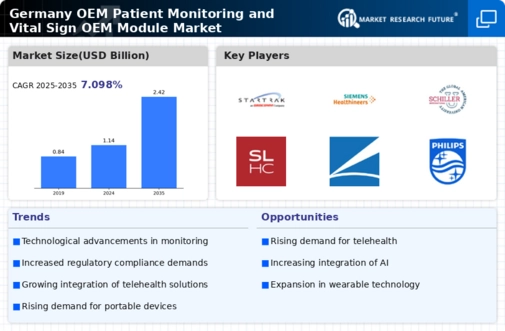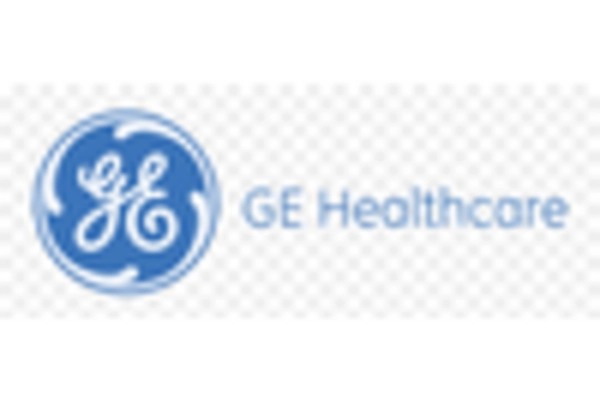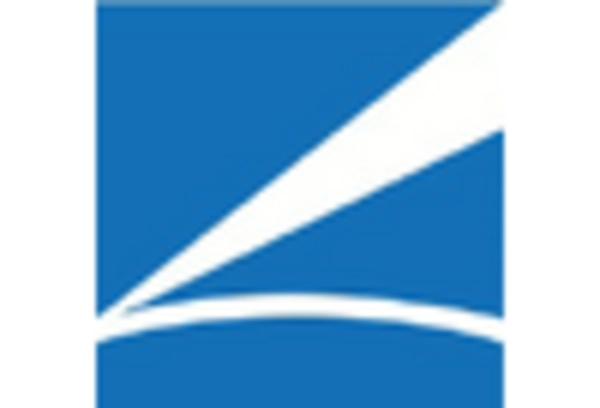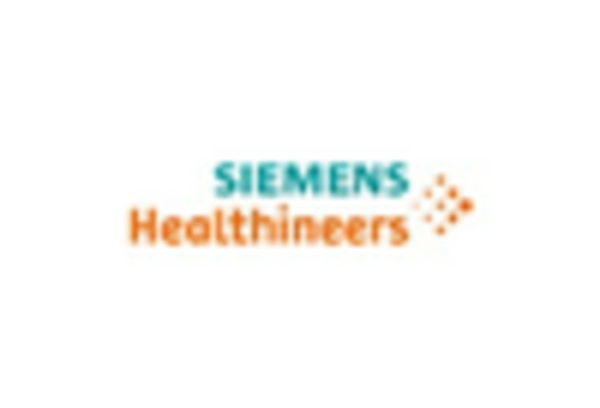Increased Focus on Healthcare Cost Management
The emphasis on healthcare cost management is a significant driver for the oem patient-monitoring-vital-sign-oem-module market. In Germany, healthcare expenditures continue to rise, prompting stakeholders to seek solutions that enhance efficiency and reduce costs. The implementation of patient monitoring systems can lead to substantial savings by minimizing hospital stays and enabling early intervention. Studies suggest that effective monitoring can reduce hospital readmission rates by up to 25%, which is particularly relevant in the context of chronic disease management. As healthcare providers strive to balance quality care with cost-effectiveness, the oem patient-monitoring-vital-sign-oem-module market is likely to thrive, offering solutions that align with these financial imperatives.
Rising Demand for Remote Monitoring Solutions
The increasing demand for remote patient monitoring solutions is a key driver for the oem patient-monitoring-vital-sign-oem-module market. As healthcare providers in Germany seek to enhance patient care while reducing costs, the adoption of remote monitoring technologies has surged. This trend is evidenced by a reported growth of approximately 15% in the utilization of telehealth services in recent years. The oem patient-monitoring-vital-sign-oem-module market is poised to benefit from this shift, as these modules facilitate continuous monitoring of vital signs, enabling timely interventions. Furthermore, the convenience of remote monitoring aligns with the preferences of patients, who increasingly favor home-based care options. This evolving landscape suggests a robust future for the market, driven by the need for efficient and effective healthcare delivery.
Aging Population and Increased Chronic Diseases
Germany's aging population and the rising prevalence of chronic diseases are pivotal drivers for the oem patient-monitoring-vital-sign-oem-module market. As the demographic landscape shifts, the demand for effective monitoring solutions to manage chronic conditions such as diabetes and cardiovascular diseases intensifies. Reports indicate that by 2030, nearly 30% of the German population will be over 65 years old, necessitating advanced monitoring technologies. The oem patient-monitoring-vital-sign-oem-module market is likely to experience substantial growth as healthcare systems adapt to these demographic changes. This trend underscores the importance of developing innovative monitoring solutions that cater to the specific needs of older adults, thereby enhancing their quality of life and reducing hospital admissions.
Advancements in Wireless Communication Technologies
Advancements in wireless communication technologies are reshaping the landscape of the oem patient-monitoring-vital-sign-oem-module market. The proliferation of 5G networks in Germany is expected to enhance the capabilities of remote monitoring systems, allowing for faster data transmission and improved connectivity. This technological evolution facilitates real-time monitoring and data sharing among healthcare providers, which is crucial for timely decision-making. The oem patient-monitoring-vital-sign-oem-module market is positioned to capitalize on these advancements, as manufacturers develop modules that leverage high-speed wireless communication. The potential for enhanced patient outcomes and operational efficiencies suggests a promising trajectory for the market as these technologies become more widely adopted.
Integration of Artificial Intelligence in Monitoring Systems
The integration of artificial intelligence (AI) into patient monitoring systems represents a transformative driver for the oem patient-monitoring-vital-sign-oem-module market. AI technologies enhance the accuracy and efficiency of vital sign monitoring, allowing for predictive analytics and real-time data processing. In Germany, the healthcare sector is witnessing a growing investment in AI, with projections indicating a market growth rate of around 20% annually. This technological advancement not only improves patient outcomes but also streamlines clinical workflows, making it a compelling factor for healthcare providers. The oem patient-monitoring-vital-sign-oem-module market stands to gain significantly as manufacturers incorporate AI capabilities into their offerings, thereby meeting the evolving demands of healthcare professionals and patients alike.

















Leave a Comment